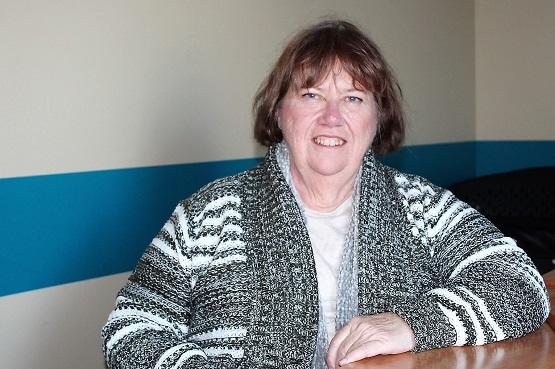
Surviving with the Help of SNAP
In 1979, Ann* was on her way home from a celebratory camping trip with a friend—she had just graduated from the University of Minnesota with a degree in legal studies—when their car was forced off the road by a truck and rolled several times, finally landing in a ditch. Ann, who was in the passenger seat, miraculously woke up in a hospital bed a few hours later. In addition to multiple cuts and bruises, the single-mom of four learned she’d suffered neck, back and rib injuries. The latter resulting in chronic pericarditis (inflammation around the heart). After weeks in the ICU and unable to care for her young children, Ann moved in with her parents, her once-promising future now bleak.
“It was a really scary time for me,” she said. “I was a young, single mom with no place to go.”
The car crash would be the first of three Ann would be unlucky enough to experience during her lifetime.
Just 10 years later, Ann was in another car crash and all the old injuries she’d sustained in the first accident flared up again. A few years after that she survived yet another crash. Both times, Ann’s vehicle was hit while stopped at a red light.
“Being disabled nearly my entire adult life, I was never able to build a retirement fund, savings or insurance for my senior years,” admits Ann. “I was lucky at the time that I had my parents to help with the kids because it was extremely hard to take care of myself, much less them. Thankfully, my kids all went on to college and are doing well.”
After undergoing countless surgeries over the years, including back surgery and a double knee replacement, Ann developed osteoporosis. Today, Ann lives in the same house she grew up in, where she takes care of her ailing 99-year-old mother. She uses a cane to get around, and only drives when she absolutely must. She relies on disability insurance and social security to live. But the $600 Ann receives once a month barely covers housing costs, medical bills and other necessities. She uses SNAP (formerly known as food stamps) to purchase groceries.
Ann admits she never imagined she’d end up like this. Her father was a world history teacher and WWII veteran. Even though he suffered from PTSD after the war, he was still able to work and purchase a home—the same home Ann and her mother live in now—and pay it off completely before he died. Ann believes rising housing costs are part of the reason why so many people need help.
“It’s scary for me,” she said. “I’m a senior woman. I’m unable to work. SNAP is the only way I can afford to buy food. It shouldn’t be this way in a country with so much money. We’re lucky that my father was able to pay off his house a long time ago, back when houses were affordable. Housing costs are a real problem today—especially if you’re disabled.”
Help Us End Hunger
Second Harvest Heartland and the agencies and food pantries we partner with continue to help federal workers and others impacted by the recent government shutdown. Help us help them by donating funds, food or volunteer time. Together we can give our neighbors the hope and stability they need. Find out how you can get or give help.
*Name changed to protect privacy.
